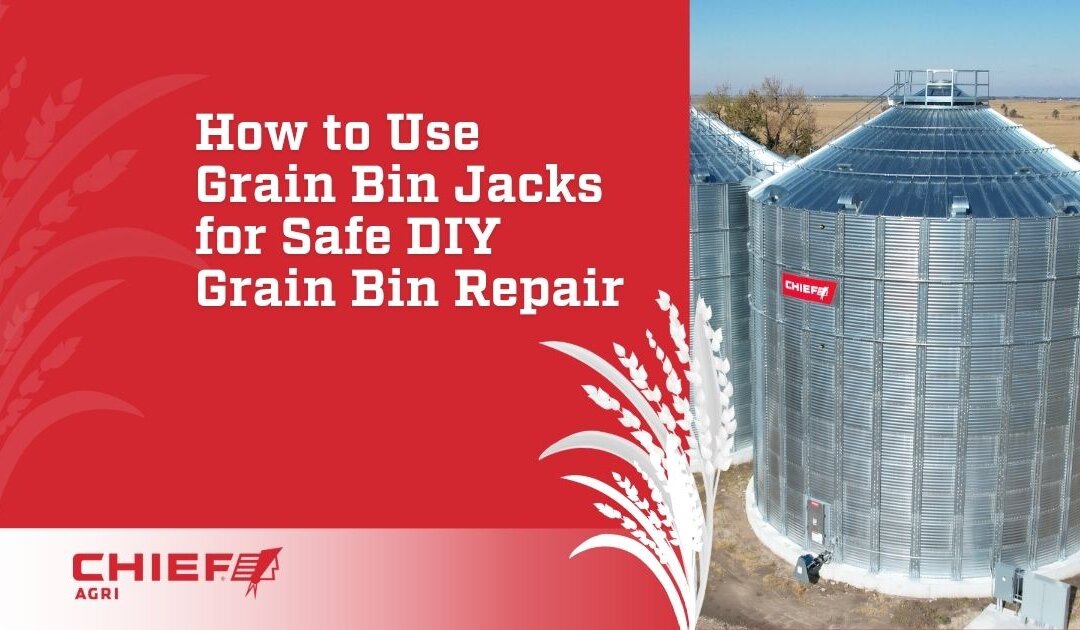A Guide to Using Grain Bin Jacks Safely for Grain Bin Repair
Maintaining the health of your grain bins is crucial for the safety and efficiency of your farm. Proper grain bin maintenance and timely repair protect your harvest and prevent costly structural failures. When the time comes for farm equipment repair tasks like replacing a rusted bottom ring or repairing a cracked foundation, one of the most effective tools for the job is grain bin jacks.
At Chief Agri, we understand that reliable agricultural equipment and the skills to keep it in good working condition are crucial for your farm’s success. That’s why we’ve created a comprehensive guide on how to safely and effectively use grain bin jacks for farm bin maintenance. We’ll walk you through everything you need to know, from the basic functions of a grain bin jack to the full lifting process.
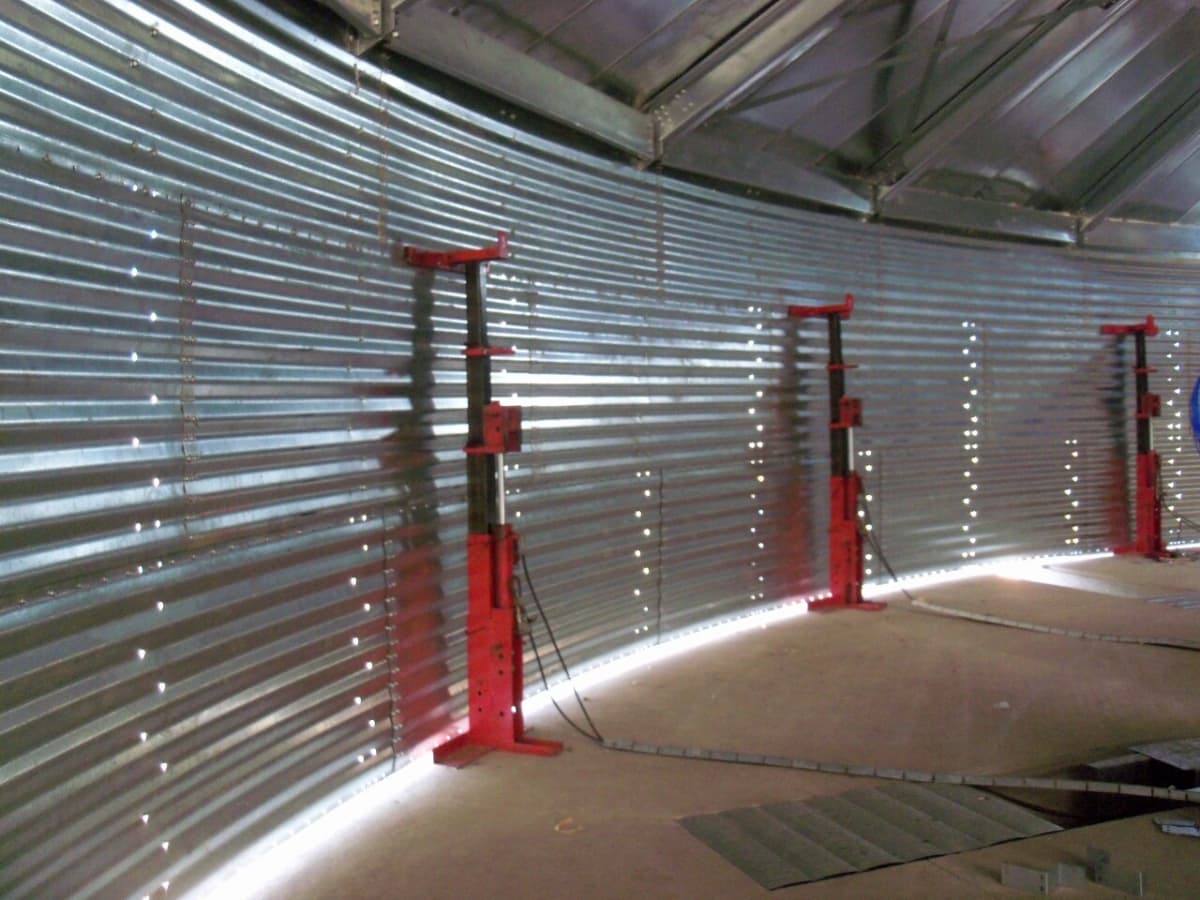
What Are Grain Bin Jacks and Why Are They Essential for Grain Bin Repair?
Grain bin jacks are powerful tools designed to lift and support the immense weight of a grain bin structure. They’re a core component of many farm equipment repair and maintenance tasks, allowing you to access the often-inaccessible bottom sections of the bin. This is especially important for working on the foundation, replacing damaged panels, or treating rust.
Grain bin jacks are absolutely vital for any serious grain bin repair because they provide a stable and secure way to lift the heavy structure without risking damage to the bin or injury to the crew.
While some farmers may use manual A-frame jacks, most modern systems, especially those for larger bins, rely on hydraulic technology. These sophisticated hydraulic systems work in unison to automatically level and lift the entire structure evenly. This prevents the warping or twisting that can occur with uneven lifting.
Grain bin jacks were developed in the 1960s by Sib Simes in Walters, Minnesota. He created his design based on the government-issue Binkley dolly jacks. His jacks were primarily used to erect grain bins and were distinguishable by their John Deere green color and other unique features, including flat gearbox covers and removable gearbox bushings.
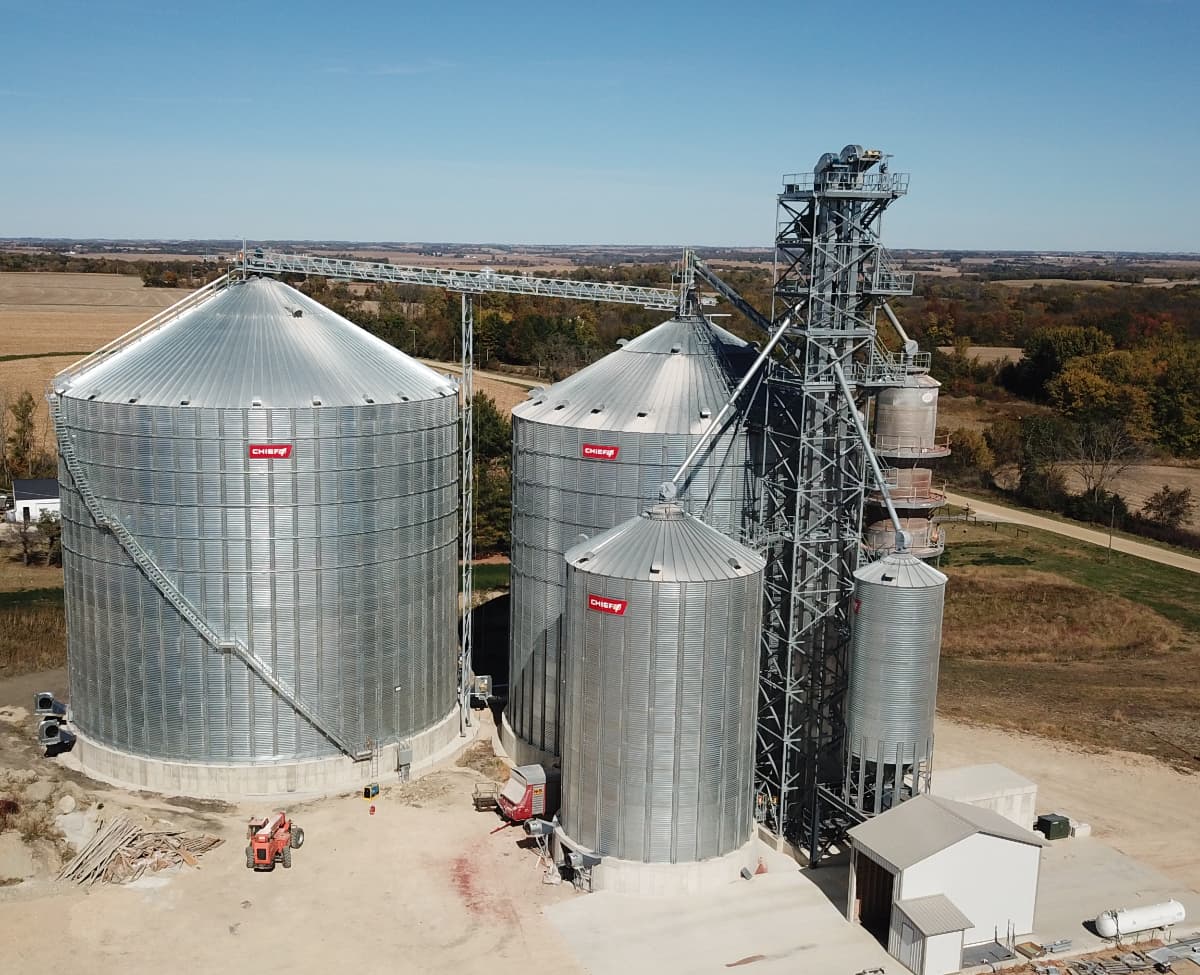
Pre-Operation Checklist: Safety First When Operating Grain Bin Jacks
Before you begin any grain bin repair project, a thorough safety check is non-negotiable. Following this checklist will help ensure the safety of everyone involved and prevent damage to your equipment.
Having a Plan
For a successful lift, you’ll need a clear plan that everyone on your team understands. Discuss the entire process, from placing the grain bin jacks to lowering the bin, and ensure each person knows their specific role and the emergency procedures.
Personal Protective Equipment (PPE)
Wear appropriate PPE at all times. This includes a hard hat, safety glasses, and steel-toed boots to protect against falling objects or dropped equipment.
Tool and Equipment Inspection
Before each use, carefully inspect all of your grain bin jacks and hydraulic lines. Look for any signs of wear, cracks, or leaks. A faulty hydraulic line can lead to an uneven lift.
Confirm that all bolts, pins, and connection points are secure. A loose pin could fail under the immense pressure of lifting the bin.
Bin Preparation
The bin must be completely empty before attempting to lift it. Any remaining grain can shift and create an uneven load, leading to a catastrophic failure.
Bin Site Inspection
Inspect the area around the bin for any potential hazards. Ensure there are no power lines, gas pipes, or other obstructions that could interfere with the grain bin jack system.
Lockout/Tagout Procedures
Never begin work on a grain bin without first deactivating all power to the bin. This includes augers, fans, and any other electrical components. Use a lockout/tagout system to physically secure the power sources and prevent accidental activation.
It’s crucial to remember that a grain bin lift is a job that requires teamwork — you should never attempt to lift a grain bin on your own.
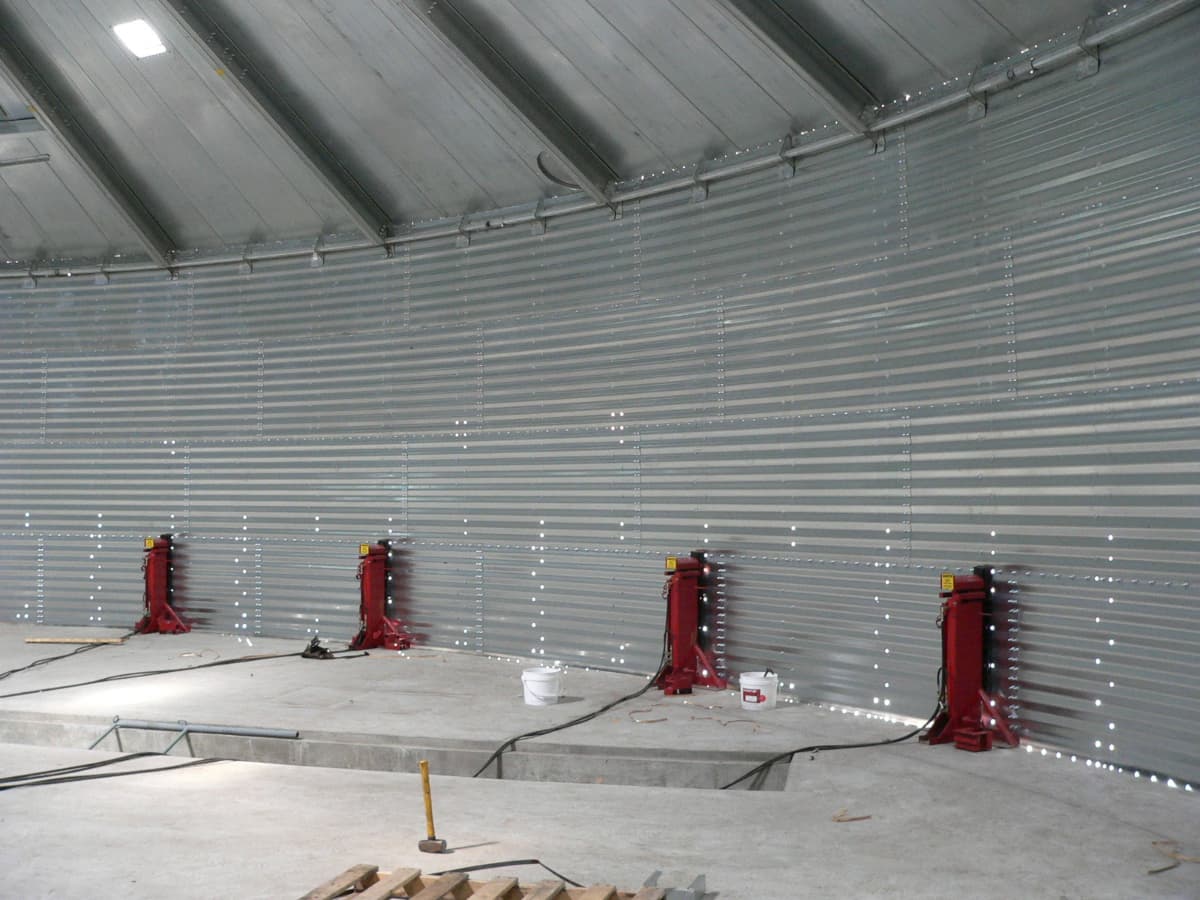
A Step-by-Step Guide to Safely Operating Grain Bin Jacks
Once your safety checklist is complete, you can begin the process of lifting grain bins. Remember, patience and precision are key.
1. Placing the Jacks
- Position your grain bin jack system evenly around the circumference of the bin, making sure to use enough jacks for the bin’s size and weight to ensure a stable lift.
- Securely anchor each of the grain bin jacks to the foundation or stem wall.
- Finally, verify that all jacks are properly aligned and level before you begin the lifting process.
The proper spacing for grain bin jacks depends on the size of the bin and the type of jack system being used. While A-frame style jacks may require one per wall sheet, modern hydraulic systems often call for a jack every two sheets. The most important rule is to position the jacks evenly around the circumference to distribute the bin’s weight and ensure a stable lift.
2. Connecting the System
- Connect the hydraulic lines to each jack and to the central pump.
- Take the time to verify that all quick connectors are fully snapped together.
- Modern systems are designed for automatic leveling, but a loose connection can compromise the integrity of the entire lift.
3. The Lifting Process
- With a team member monitoring each jack, slowly and evenly begin to lift the bin one stage at a time.
- Apply hydraulic pressure gradually.
- As each stage is lifted, a pin is inserted into the jack to secure it—this ensures that even if there is a hydraulic failure, the bin remains supported.
- Be vigilant and watch for any signs of warping, bending, or other structural damage.
- If you notice any issues, stop the lift immediately.
Watch this demonstration of how to attach and operate a hydraulic grain bin jack.
This video shows what a full grain bin jack setup in use looks like.
4. Performing the Repair
Once the bin is lifted to the required height, you can perform your grain bin repair tasks. Common projects include replacing rusted panels, repairing the foundation, or applying a fresh coat of rust-preventative paint to the lower rings.
5. Lowering the Bin
The lowering process is the reverse of the lift. Carefully and evenly lower the bin, stage by stage, onto its newly repaired foundation. As before, a team should monitor each jack to ensure a smooth, level descent.
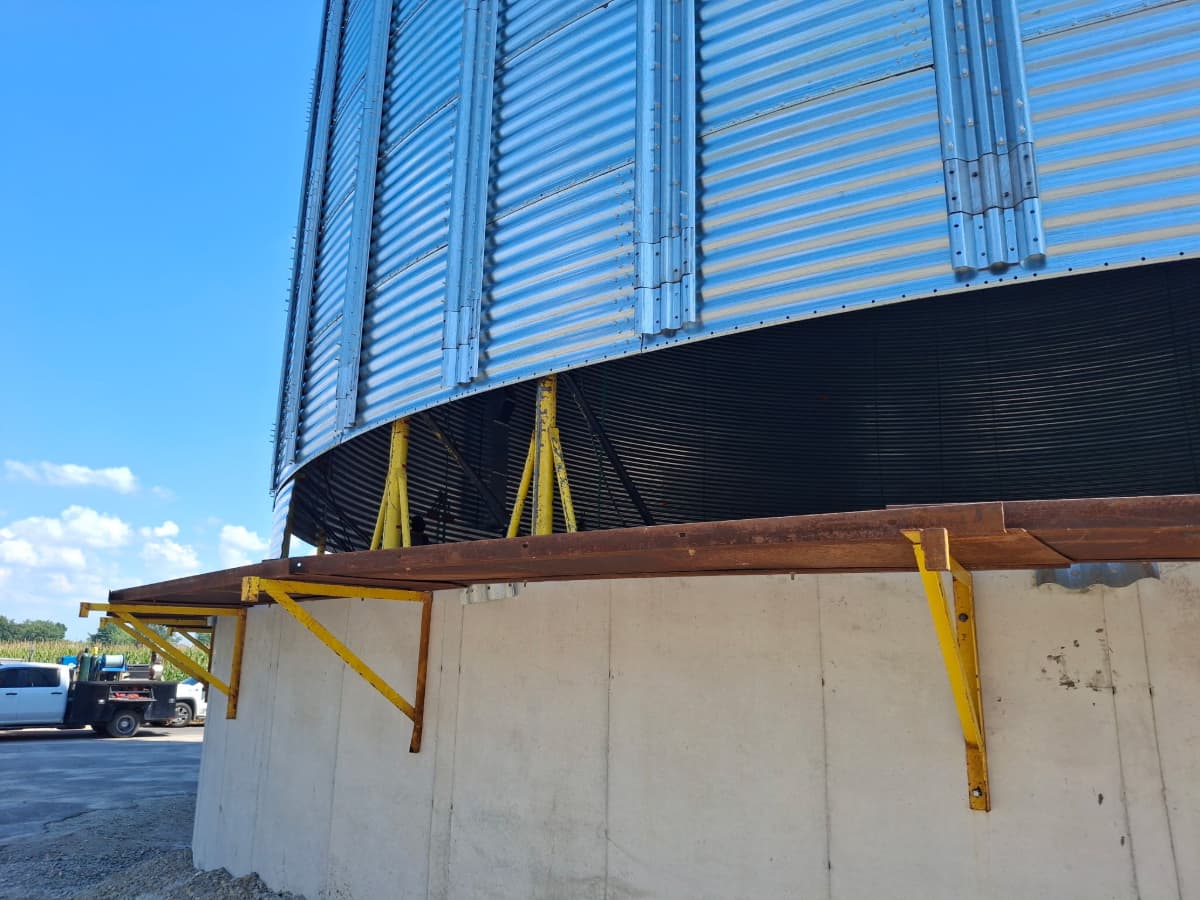
Common DIY Grain Bin Repair Tasks Using Grain Bin Jacks
Lifting a grain bin with a grain bin jack opens up a world of possibilities for DIY farm bin repair. Some of the most common tasks include:
- Foundation Repair: Lifting grain bins with a grain bin jack allows you to access and repair issues like cracks or crumbling concrete, which is crucial for the longevity of your bin.
- Bottom Ring and Panel Replacement: Grain bin jacks allow you to replace the rusted or damaged bottom panels, which are most susceptible to moisture and rust, without having to disassemble the entire bin.
- Rust and Corrosion Treatment: Lifting the bin gives you the opportunity to properly clean and treat any rust on the lower rings and apply a protective coating to prevent future corrosion.
- Sealing and Waterproofing: Lifting the bin provides a clear view of the bin’s base, allowing you to re-seal the joint between the bin and its foundation to prevent water from seeping in and damaging your grain.
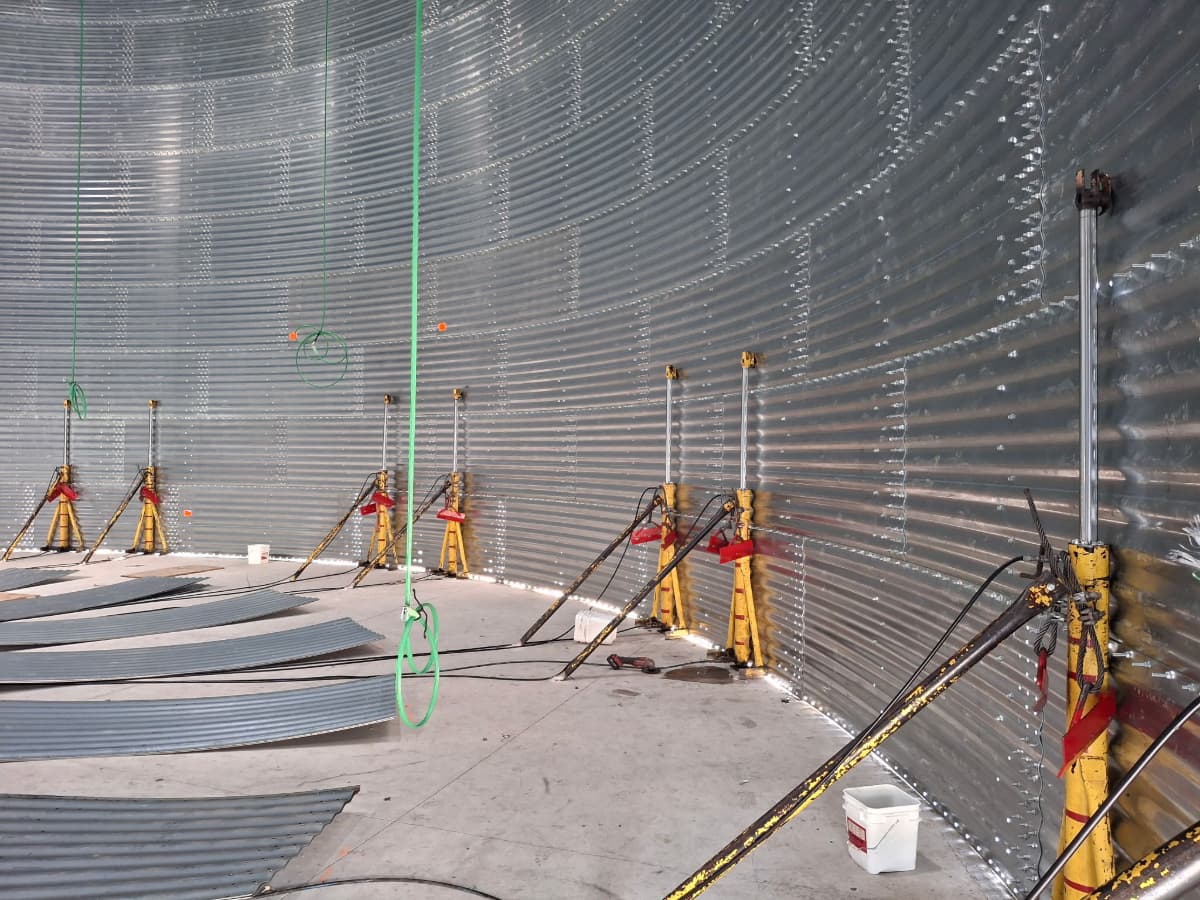
Calling a Professional for Farm Equipment Repair
While using a grain bin jack is an incredibly useful skill, some grain bin projects are simply too complex or dangerous for a DIY approach. It’s important to recognize the limits of your abilities and when it’s best to call in a professional for your farm equipment repair.
Signs of Major Structural Damage
If you notice signs of major structural damage—such as bent or severely warped panels, extensive foundation cracks, or issues with the roof—it’s time to call an expert. These problems require specialized knowledge and equipment to repair safely.
The Importance of Experience
Professional services for grain bin repair come with years of experience and specialized heavy-duty equipment. They can diagnose complex issues and perform repairs that go beyond the scope of a standard DIY project.
Cost-Benefit Analysis
Finally, consider the cost-benefit analysis. The potential risk of a catastrophic failure, which could lead to injury or the destruction of your bin, far outweighs the cost savings of attempting a repair you’re not equipped to handle. When in doubt, a professional is always the safest bet.
More on grain bins:
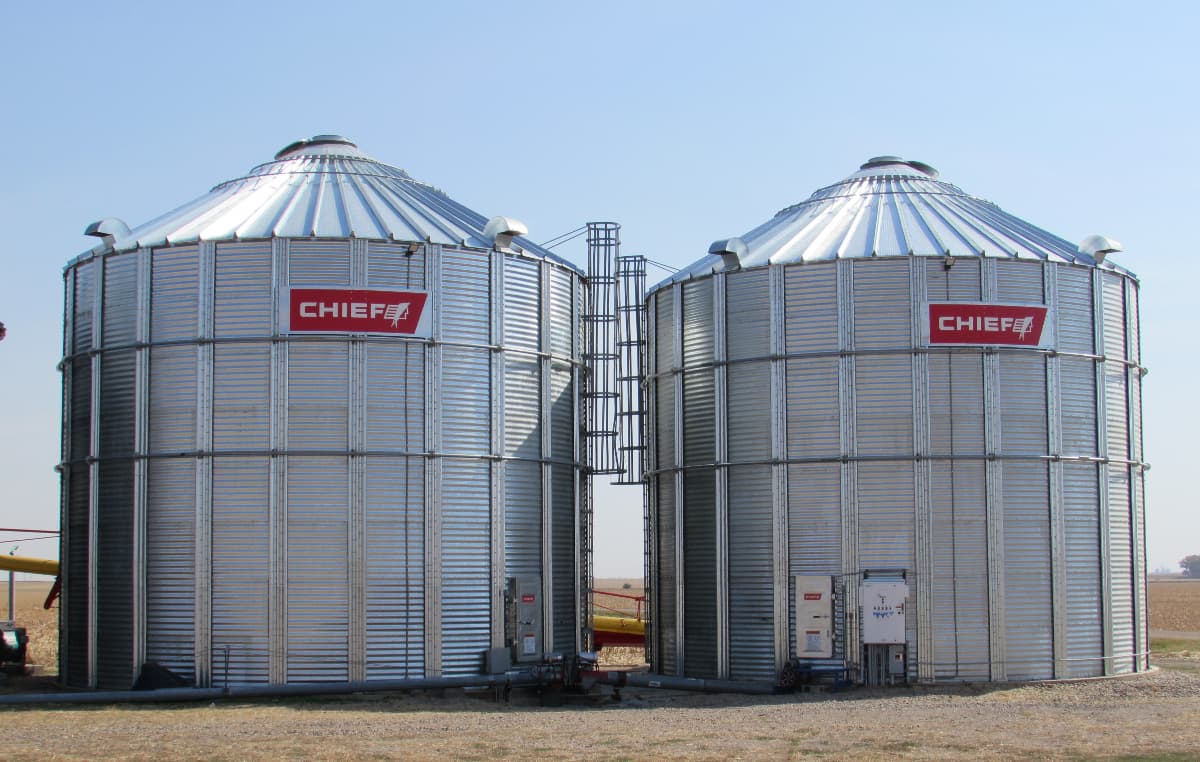
Ensuring the Longevity of Your Grain Bins
Regular grain bin maintenance is the best way to ensure the longevity and safety of your grain storage system. By understanding how to safely use grain bin jacks, you can protect your valuable bin assets and ensure a safe working environment.
Remember always to prioritize safety, and never hesitate to call in a professional when the job requires specialized expertise.
At Chief Agri, we’ve been a trusted leader in agricultural solutions for decades. We’re committed to providing the highest quality grain storage equipment and the knowledge you need to maintain it.
If you have questions about your grain storage needs or require expert advice, contact our sales team today to learn how our products and expertise can support your farm.

